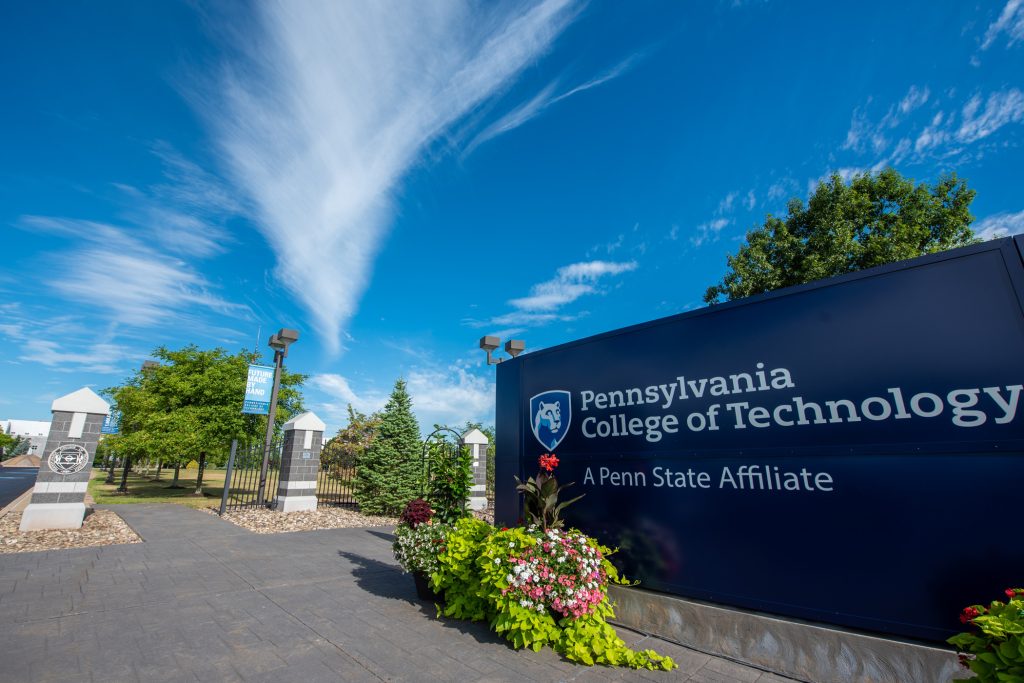Filling the gap between talent and industry

By Holly Riddle
According to McKinsey & Company, the skilled labor shortage that American industry has been facing for a while doesn’t seem to be going anywhere, anytime soon, due to a variety of factors. There’s the aging workforce and lack of young replacements. Meanwhile, changes in industry, such as the transition to clean energy and innovations in advanced manufacturing, are spurring increasing demand.
More regionally, Alison Diehl, vice president for workforce development at Pennsylvania College of Technology (Penn College) said the current labor shortage is multifaceted, driven by several factors.
She told us, “First, there’s a significant skills gap in many industries in which the demand for specialized technical skills far outpaces the supply of qualified workers. This gap has been exacerbated by rapid technological advancements, requiring workers to continually upskill or reskill. Additionally, demographic shifts, such as the retirement of baby boomers, lower birth rates and population decline in rural Pennsylvania, have left many positions unfilled. Finally, the perception of certain careers, especially in skilled trades, has led to a decline in interest among younger generations.”
Career and technical schools like Pennsylvania College of Technology and Central Pennsylvania Institute of Science and Technology (CPI) are leveling up to fill the gaps, working to inspire the Gen Z workforce to meet increasing demand and replace an aging workforce.

“A direct pathway to a rewarding, stable and sustainable career”
For CPI, located in Bellefonte, it’s important to show young talent their options sooner rather than later. As such, the majority of the institute’s students are also high school students. CPI instructs nearly 500 high school students and just over 100 post-high school students, across its 16 program areas — and for those high school students, the already affordable CPI tuition is covered by their high schools, making CPI an even more attractive option.
“We want students to come in early and learn a career or a trade, so that if they choose not to continue their post-secondary education, they’re able to enter the workforce at a good, high-paying, life-sustaining wage,” said CPI President MaryAnn Volders. “College isn’t for everyone. Post-secondary institutions aren’t for everyone… We can have 18 and 19-year-olds coming out of CPI and going to work for $75,000–$100,000 based on the skills they learned [here].”
(McKinsey noted that some trades have witnessed wage increases of more than 20% since 2020, due to labor shortages and increasing competition for talent.)
CPI is also remaining current with students’ and industry’s needs through initiatives like its joining of the Smart Automation Certification Alliance (SACA), which allows students to earn SACA Industry 4.0 certifications, prepping them to work in Industry 4.0 and IIoT sectors. CPI likewise partners with more than two dozen other educational institutions, so that students can transfer their credits elsewhere and pursue further education, if desired.
At Penn College in Williamsport, attracting students to its programs begins with showcasing the real-world impact and career opportunities that the college’s offerings can provide.
“By offering hands-on learning experiences, state-of-the-art equipment and facilities and connections to industry employers, we make it clear that Penn College is a direct pathway to a rewarding, stable and sustainable career.”
Diehl explained, “We engage in outreach efforts that highlight success stories of our graduates, the strong employment rates and the high demand for skills in the industries we serve. Additionally, we partner with local high schools, community organizations and industry leaders to create a pipeline of interested students. We were recently awarded a $4 million U.S. Department of Labor grant to improve the pipelines of high school students and unskilled workers into pre-apprenticeship and then apprenticeship. By offering hands-on learning experiences, state-of-the-art equipment and facilities and connections to industry employers, we make it clear that Penn College is a direct pathway to a rewarding, stable and sustainable career.”

Can the Alleghenies solve the skilled labor shortage?
While these schools might be excelling at equipping its students for the regional workforce, that doesn’t mean that it’s not up against some challenges.
Volders said, “I think a lot of parents are afraid that if they send their student to a career and tech school, they’re not going to have an academic background, that they need to go to college. That’s not true… We need more parents to send students here to learn a trade. Maybe they use it while they’re in college, maybe they make it a career path, maybe it’s just a skill they learn…But I really think it boils down to people being afraid to say, ‘I’m a career and tech student’…”
This is something that the above-linked McKinsey article touched on as well. A survey found that, despite increased enrollment in career and trade schools, 74% of students reported a perceived stigma associated with choosing vocational schools over traditional four-year universities, and nearly 80% of students reported that their parents preferred they pursue a traditional college education, with only 5% of parents pushing their children to a vocational school.
“We’ve upped our game a lot in the last 20 to 25 years, in career and technical education.”
“Vocational schools in the 80s and 90s had a different atmosphere. Now, we’re much more academic and much more student-centered, and much more technical in nature… We’ve upped our game a lot in the last 20 to 25 years, in career and technical education. However, I do think a lot of parents remember the old vo tech,” added Volders. “We’re still fighting that stigma.”
There’s also the fact that many members of the Gen Z workforce highly value flexibility, but it’s difficult to provide a large degree of flexibility in a workplace that requires one to be physically present in a dedicated workspace, such as in a dentist’s office or mechanic’s garage.
That, though, is not an insurmountable challenge. Volders posed, “Can we give people [in skilled trades] more flexibility in their time? Can we give them more personal days? Can we give them more vacation days? Can we help them put family first and not necessarily put the job first when not necessary? Those are the things we have to look at.”
Diehl likewise challenged employers to take a more proactive approach in attracting young industry talent, particularly with a look at talent development.
“This includes partnering with educational institutions like Penn College to create customized training programs that align with their specific needs. Offering internships, apprenticeships and co-op opportunities not only helps train the next generation of workers, but also allows employers to identify and recruit top talent early on,” she said. “Additionally, employers should focus on creating an attractive work environment that offers career growth, competitive wages and a strong company culture. They should also consider offering continuous learning opportunities for their current workforce to retain and develop their talent pool.”


